Science and Cricket at Agra College
Category:

Ashok Sarkar (born 1929) retired as an Air Commodore from the Indian Air Force. He was awarded the Vishisht Seva Medal (VSM) by the Indian government. His career included commanding a number of Air Force field units, and a diplomatic posting at the Indian Embassy in Moscow during the 1960s. He was an outstanding student and sportsman in his youth, and after his retirement, he was an inspiration for young sports talent in Agra, his hometown. He continues to run a play-school for young children, a labour of love he founded with his late wife, Chitra, and enjoys a quiet life nurturing the prize-winning flower garden at his ancestral home in Agra.
I was a student in Agra College, Agra over 1944-50. At that time, Agra College was one of India’s leading educational institutions.
Agra College was established in 1823 by Gangadhar Shastri, a noted Sanskrit scholar of his time. In the beginning, the College had two large hostels, namely, Hewett and Thompson. Agra College soon attracted students from many parts of India. A number of communities came forward to build hostels for students of their own community, such as Bhargava Hostel, Chaubey Hostel, Kayastha Hostel, and Vaish Boarding House. Each hostel had a cemented tennis court, apart from volleyball and basketball courts, as well as a large recreation hall, where functions were held from time to time.
Till 1947, the college invariably had an Englishman of repute as the Principal. Eminent professors and scholars held the posts of Head of Department. The law faculty was one of the best in India. Students from as far as Lahore, Karachi, Peshawar, Madras (now Chennai), and Cochin (now Kochi) pursued their studies in this college, to take advantage of the highly skilled teaching staff.
When I joined the College in 1944, it had good facilities for cricket, hockey, and tennis. Sports teams from Bombay (now Mumbai), Karachi, Lahore, and Madras (now Chennai) used to come to Agra on a regular basis to play matches. They used to be accommodated in the hostels' recreation halls.
In December 1944, the Lahore Wanderers came to Agra to play cricket matches. The team included Fazal Mahmood, who went on to become the captain of the Pakistan cricket team, and one of the world's most outstanding cricket players. In his later life, he joined the Pakistan police services, and rose to the rank of Deputy Inspector General. Given the many years that have passed, my memory is a bit hazy, but I seem to recall that Imtiaz Ahmed and Nazar Mohammed were also members of the Lahore team.
The match between the Agra district team and Lahore Wanderers was played on the Agra College ground. I was 15 years old, and the youngest member of the Agra team. The visiting team piled up a huge score, with Fazal Mahmood scoring a century. Then, one of his attempts to hit a six fell short, and I took the catch at the boundary. My catch was seen as a brilliant piece of fielding, particularly because I was so young. Fazal Mahmood personally patted me on my back for my effort.
In those days, the relationship between teachers and students was deep - the teachers personally knew every student in the class. I was considered one of Agra College's outstanding cricket and hockey players. In recognition of my sporting achievements, I was awarded the Agra College Colour, which was awarded after a gap of 10 years - a distinction that came to me.
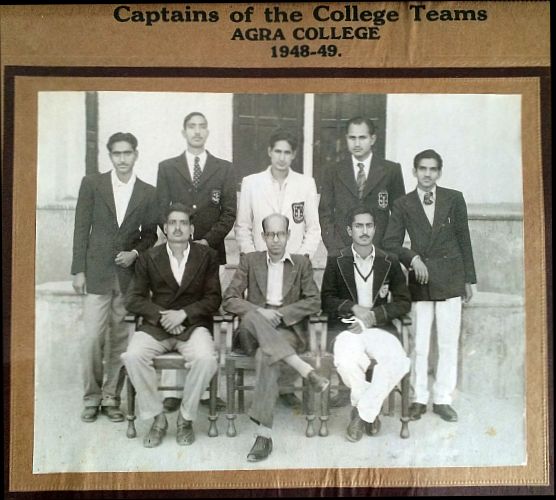
Ashok Sarkar, captain of the Agra College cricket team, sitting first from the right.
I was also the first Agra College student to play in the Ranji Trophy for UP. I missed a number of lectures due to my sports activities\; this deficiency was made up by teachers specially deputed to cover the missed lectures. That was the degree of personal interest taken by the college in its students.
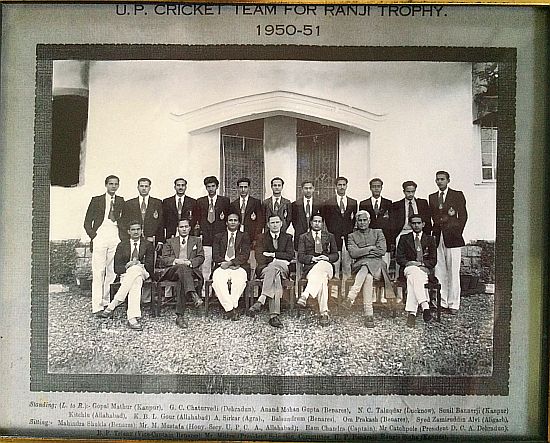
Uttar Pradesh cricket team for the Ranji Trophy, 1950-51. Ashok Sarkar standing fourth from the right.
During one of the college cricket matches against Agra Medical College, I fractured my left hand, which was put under plaster. This happened just before my M.Sc. practical examinations, which meant that I would face difficulties in the examination. My Principal wrote to the Chancellor of Agra University to permit a student of B. Sc. to assist me in my practical examination, as a very special case. This enabled me to take the practical examination, which I would have otherwise been forced to miss.
I managed to secure the first position in my M. Sc examination in Agra University. I was also selected in the teaching department. Taking into account my performance in both sports and academics, I was awarded Gold Medal, which was given to me by the then President of India, Dr Rajendra Prasad, who visited Agra College at the time of the college's Centenary.
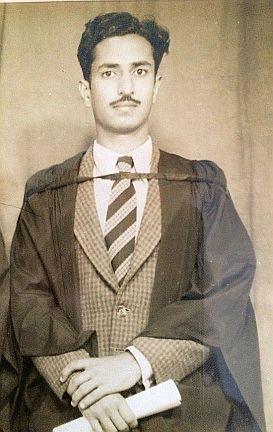
Ashok Sarkar, Gold Medal, Agra University. M.Sc. examination. Given by Rajendra Prasad, President of India
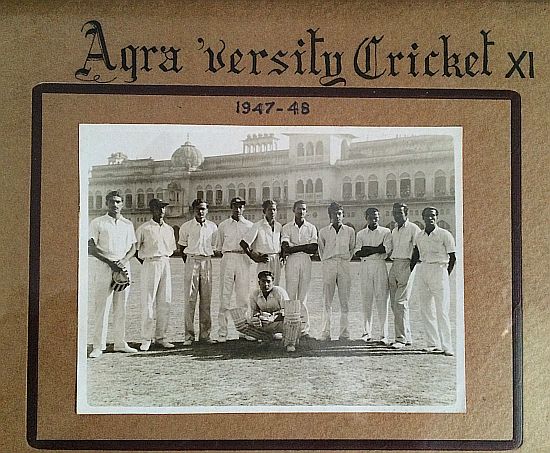
Agra University cricket team, 1947-48. Ashok Sarkar standing second from the left.
In 1950, I became the captain of the Agra University cricket team, which played in the All India Rohington Baria Inter-Varsity tournament. At that time, Agra University comprised of colleges of Central India (Indore, Gwalior, Bhopal, etc.), Rajasthan (Jaipur, Ajmer, Jodhpur, etc.) and Western UP (Meerut, Bareilly, Kanpur, etc.). As a result, there was stiff competition for getting into the cricket team.
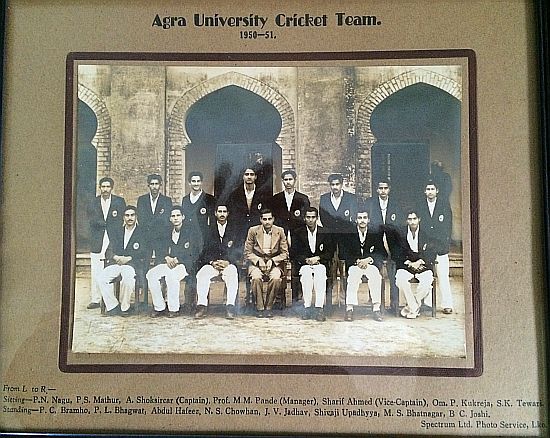
Agra University cricket team 1950-51. Ashok Sarkar, captain, sitting third from the left.
My team was a mix of Muslim and Hindu players, who got on well with each other. Our outstanding bowler was Sharif Ahmed of Holkar College, Indore, who took the maximum number of wickets in the matches we played. In the North Zone, we defeated Lucknow and Aligarh universities to reach the semi-final against Delhi University. Against Delhi, we took a sizeable lead in the first innings. But, the Delhi team staged a comeback to snatch the match by a few runs.
I was a good batsman. My batting average, as show in the Cricket Almanac, 1950, was 199 runs per innings.
For Agra College, I regularly played hockey, in the right half-back position. Under my captaincy, the college hockey team won the prestigious annual match, 1949-50, against St John's College, Agra.
I also played a couple of matches in the first eleven of the college football team in the local league.
The famous Dhyan Chand hockey tournament was started in 1947-48 on Agra College's hockey ground. It continued to be held for many years before it was shifted to New Delhi.
Epilogue
With the passage of time, Agra College's academic and sports activities started declining. Now, there is hardly anything to show that Agra College was once the epicentre of both academics and sports.
_______________________________________
© Ashok Sarkar 2015
Editor's note: I approve all comments written by people. The purpose of approval is to prevent unwanted comments, inserted by bots, which are advertisements for their products.
Add new comment